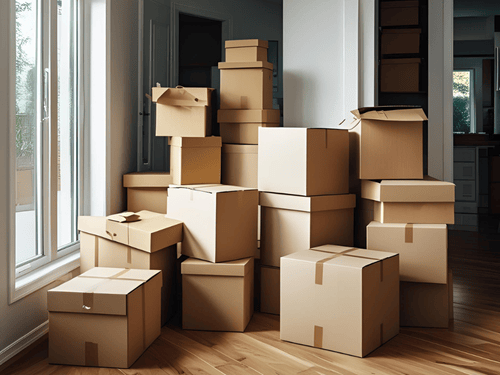Running a fast-growing e-commerce brand feels like riding a rocket ship. Orders pour in, new customers discover your products daily, and your team scrambles to keep up. But here’s the catch: explosive growth often brings explosive inventory problems.
The numbers tell a stark story. Inventory distortion costs retailers $1.8 trillion annually. That’s the combined price of having too much stock sitting around and losing sales when items run out. For growing brands, these mistakes can kill momentum fast.
I’ve seen countless promising companies stumble because they couldn’t balance their inventory. Too little stock means angry customers who won’t come back. Too much means cash trapped in storage fees and dead products. Getting it right separates thriving brands from those that crash and burn.
When Popular Items Disappear
Nothing hurts more than watching customers abandon their carts because your best-selling item shows “out of stock.” Research shows 71% of shoppers will switch to a competitor when they can’t find what they want. Even worse, 91% of disappointed customers never return.
The real problem isn’t just one missed sale. It’s the ripple effect. A stockout during peak season can cost you hundreds of customers who might have become loyal buyers. I’ve watched brands lose thousands in lifetime value because they ran out of inventory at the worst possible moment.
Most stockouts stem from basic planning mistakes. Orders arrive late, forecasts miss the mark, or data sits in different systems that don’t talk to each other. When you’re growing fast, these small gaps become massive holes.
The Hidden Cost of Too Much Stock

On the flip side, overordering creates its own nightmare. That extra inventory needs somewhere to live, and warehouse space costs real money. Insurance, handling fees, and spoilage add up quickly when products sit for months.
I’ve seen startups blow through their funding because they ordered six months of inventory that took a year to sell. All that cash could have funded marketing, new products, or better systems. Instead, it gathered dust in a warehouse.
Smart retailers find the sweet spot. They stock enough to meet demand without tying up unnecessary capital. This balance requires nimble thinking and flexible storage solutions that can scale up or down as needed.
When Demand Goes Wild
Fast-growing businesses face constant demand swings. A viral social media post can triple your orders overnight. A supply chain hiccup can leave you scrambling for weeks. Traditional forecasting methods simply can’t handle this volatility.
Spreadsheet planning works when you ship 50 orders per week. It breaks down completely when that jumps to 500. The data gets messy, patterns become harder to spot, and manual processes create bottlenecks everywhere.
Modern demand forecasting uses real-time data from all your sales channels. Instead of guessing based on last month’s numbers, these systems spot trends as they happen. They can flag a product that’s selling 50% faster than usual, giving you time to reorder before stockouts hit.
Supply Chain Surprises
External shocks happen. Factories shut down, shipping containers get delayed, and global events disrupt everything. During the pandemic, 39% of small businesses reported supply delays that hurt their inventory planning.
The scary part? Most companies have zero visibility into their supply chains. They only learn about problems after stockouts start hitting their customers. By then, it’s too late to find alternative suppliers or adjust marketing plans.
Resilient brands build redundancy into their operations. They work with multiple suppliers, spread inventory across different locations, and maintain safety stock for critical items. When one route fails, they have backup options ready.
Fulfillment Bottlenecks
Having inventory is only half the battle. You still need to pick, pack, and ship every order accurately. Manual processes that work for 100 orders per week collapse under 1,000.
I’ve watched teams work 80-hour weeks during busy seasons, only to fall further behind. Mistakes multiply under pressure. Orders ship to wrong addresses, incorrect items get packed, and customer service calls explode.
The solution isn’t hiring more people. It’s building systems that can scale automatically. When order volume doubles, your fulfillment capacity should double too, without the chaos.
Why 3PL Partners Make the Difference

Smart retailers solve these problems by partnering with experienced third-party logistics providers. A good 3PL brings three things you can’t easily build yourself: technology, expertise, and scale.
Their warehouse management systems sync inventory across all your sales channels in real time. When someone buys your last item on Amazon, your Shopify store updates instantly. This prevents overselling and keeps stock levels accurate.
Advanced 3PLs also provide better demand forecasting. They analyze data from hundreds of clients, spotting patterns that might be invisible in your business alone. Companies using 3PL services report 50% fewer stockouts and 73% better forecasting accuracy.
The cost benefits are real too. 3PLs negotiate bulk shipping rates and optimize warehouse operations for efficiency. Clients typically see 25% lower warehousing costs and 20-30% better inventory accuracy. One Vareya client reduced their team’s workload by 120 hours per week while scaling business by 115%.
Most importantly, order processing becomes automatic. Orders flow from your sales channels directly into the fulfillment system. Inventory updates happen instantly, and shipments go out without manual intervention.
Focus on What Matters
Partnering with the right 3PL lets you focus on growing your business instead of managing logistics headaches. While they handle warehousing, shipping, and inventory tracking, you can invest time in marketing, product development, and customer relationships.
The best 3PL relationships feel like having an expert logistics team without the overhead. You get access to advanced technology, experienced staff, and scalable operations that grow with your business.
For fast-growing retailers, efficient inventory management isn’t just about avoiding problems. It’s about creating the foundation for sustainable growth. When customers can always find what they want, and orders ship quickly and accurately, you build the trust that turns one-time buyers into lifelong fans.

